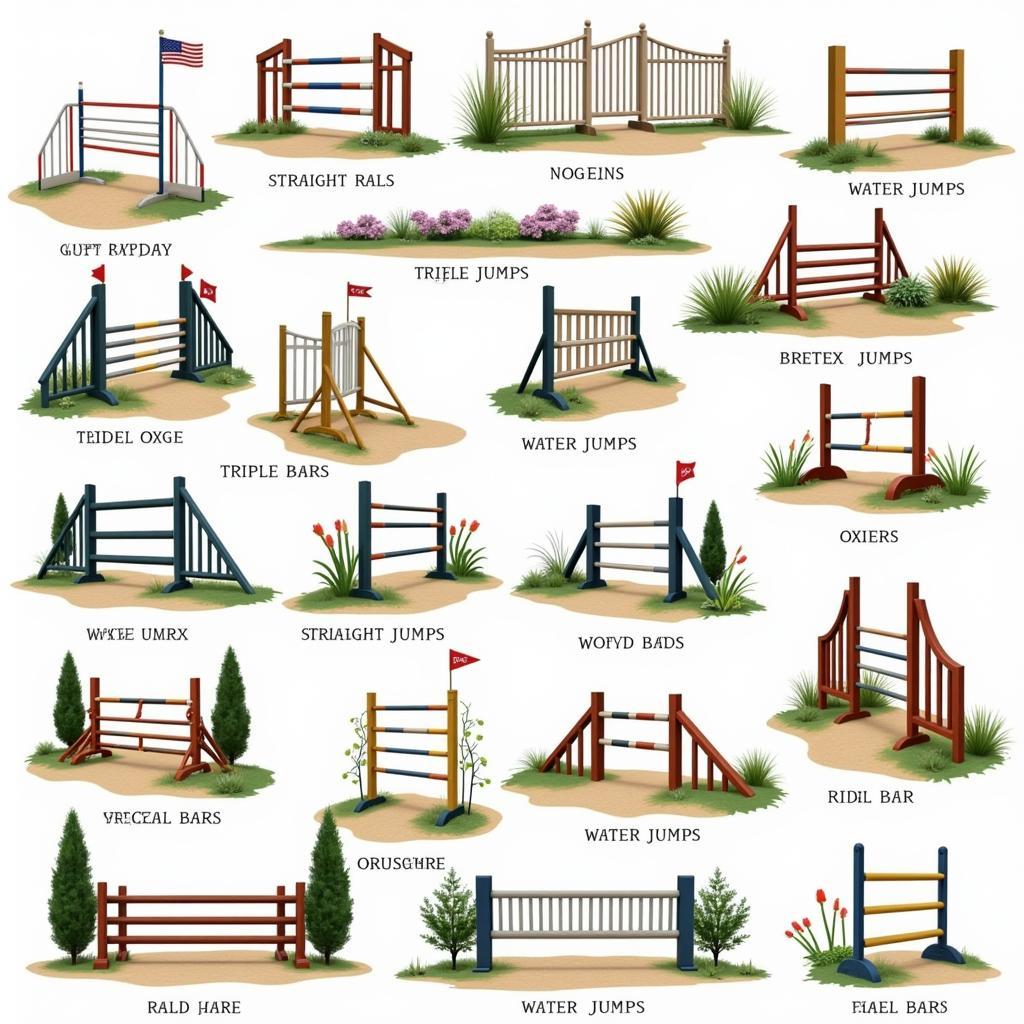Building horse jumps is a rewarding experience for any equestrian enthusiast. Whether you’re a seasoned competitor or just starting out, crafting your own jumps allows you to customize your training and create a challenging yet safe environment for your horse. This comprehensive guide will provide you with all the knowledge you need to construct sturdy and effective jumps, from choosing the right materials to understanding various jump types.
Choosing the Right Materials
Before diving into construction, it’s crucial to gather the appropriate materials. Opt for durable and weather-resistant options that can withstand the rigors of equestrian training. Common materials include:
- Wood: Pressure-treated lumber is a popular choice for its affordability and strength.
- PVC Pipe: Lightweight and easy to work with, PVC pipes are excellent for constructing jump standards and rails.
- Jump Cups: These allow for adjustable jump heights and easy rail adjustments.
- Tools: Essential tools include a saw, drill, measuring tape, level, hammer, and safety gear.
Basic Jump Construction
Building a basic horse jump involves creating two jump standards and at least one rail.
- Constructing the Standards: Cut your chosen material (wood or PVC) to the desired height. A standard height for beginner jumps is 3 feet. Ensure both standards are identical in size.
- Adding Jump Cup Holders: If using jump cups, attach holders to the standards at various heights to allow for adjustable jumps.
- Creating the Rails: Cut your chosen rail material (wood or PVC) to the desired length. A standard rail length is 4 feet.
- Securing the Rails: Place the rails in the jump cups or, if not using jump cups, rest them directly on the standards.
Types of Horse Jumps
Once you’ve mastered the basic jump, you can explore various jump types to challenge your horse and enhance their training.
Vertical Jumps:
Vertical jumps consist of rails placed at a single height. They encourage the horse to jump straight up and develop their technique. You can create different types of verticals, such as:
- Straight Rails: A classic vertical with a single, straight rail.
- Oxer: A wider vertical with two or more rails placed at slightly different heights.
Horizontal Jumps:
Horizontal jumps, also known as spread jumps, encourage the horse to stretch their frame and jump further horizontally. These include:
- Triple Bar: Consists of three rails placed at progressively increasing heights.
- Water Jump: A challenging jump with a tray of water placed beneath the rails.
 Various Horse Jump Types for Equestrian Training
Various Horse Jump Types for Equestrian Training
Safety Considerations
- Always use sturdy materials and construction techniques.
- Inspect jumps regularly for any wear and tear.
- Start with low heights and gradually increase the difficulty.
- Never leave a horse unattended with a jump.
Conclusion
Learning How To Make Horse Jumps allows you to tailor your horse’s training and create a stimulating environment. By using quality materials, understanding basic construction principles, and exploring different jump types, you can enhance your horse’s skills and build a rewarding partnership. Remember to prioritize safety at all times and enjoy the process of crafting your own equestrian obstacles!
Need help with your horse jumps? Contact us!
Phone Number: 0902476650
Email: [email protected]
Address: 139 Đ. Võ Văn Kiệt, Hoà Long, Bà Rịa, Bà Rịa – Vũng Tàu, Việt Nam.
Our 24/7 customer support team is here to assist you.





